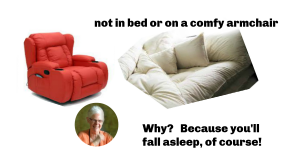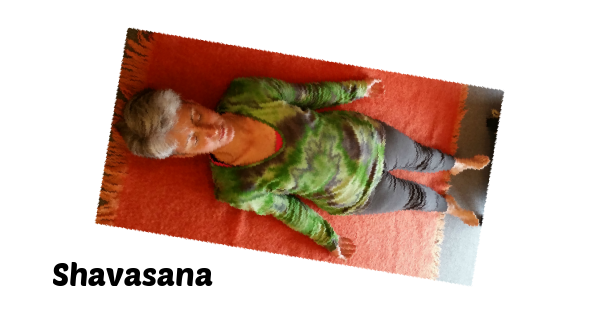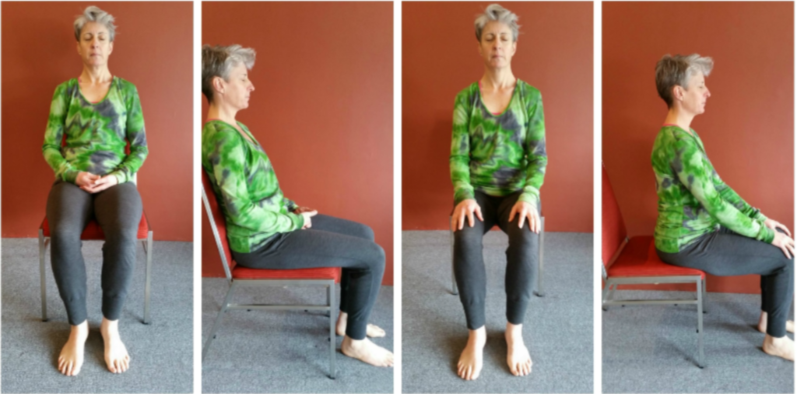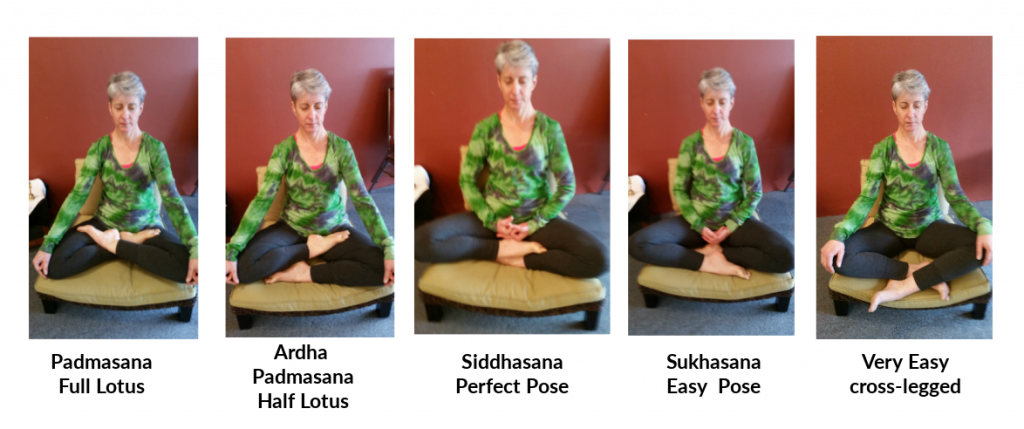
Of course, if you do fall asleep from meditation, it will be a very peaceful and refreshing sleep. But it would be a pity to turn meditation into a trigger for sleep – meditation is worth much more than that.
If you really want to recline for meditation, there’s this…the Corpse Pose, or Shavasana

Great for meditating, too. The spine is straight, and there are no distractions from fluffy cushions. And, since we all do and must make that final letting go, it means that it is something that we can do… and so we can let go to an enormous level while we still live and breathe, too. Letting go of the mind for a while, and all the things it busies itself with.
Sitting Positions
What about sitting up? Here are the best chair positions

Maximum support from the chair, or sitting towards the edge for maximum alertness…
Chair positions
You can see that “steadiness and ease” – and alertness! is what a posture is about. Having the spine straight really does make a difference. Even when you are standing or walking, notice how much more good energy there is with your spine straight, compared with slouching along. Some might call it prana, others chi, some non-obstruction of the spinal cord, others that it assists the flow of cerebrospinal fluid. Call it what you like, but alertness is intrinsic to best practice for meditation.
Ultimately, the best meditation posture is the you one can maintain, and at the same time, maintain steady alertness, without letting the mind wander – or at least bringing it back again and again and again.
Cross-legged sitting positions
It is very traditional to sit cross-legged for meditation, but it is not a requirement. Would you say that those with quadriplegia are not allowed to meditate because they can’t sit cross-legged? And if you would be plagued by pain by sitting cross-legged, better to focus on stillness than on the desire to be heroic.

Because meditation is an ancient practice, these cross-legged postures have Sanskrit names, as meditators thousands of years ago were most likely to be Sanskrit speakers. (Except for the last one… we could make a Sanskrit word for it, but it seems no one anciently needed the easiest version!) So do you have to sit cross-legged? No! that would mean than only people with flexible hips would be permitted to meditate. Nonsense!
Choose what you like
Sit in whatever way you suits your body’s capabilities. And whether you must lie down (not in bed, except if you are disabled), or can sit on the floor with cushions, against the wall for back support, or on a straight-backed chair, or on a chair designed for meditation (as shown in the cross-legged pics), choose what you like. But keep in mind the real principle: Your position should be one where you can maintain alertness, steadiness, and easefulness without cosseting yourself.
Alertness; steadiness; easefulness; awareness
Thanks to Jani for modelling these postures and for being a consistent meditator
